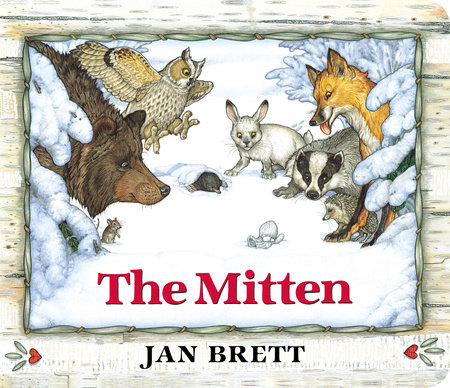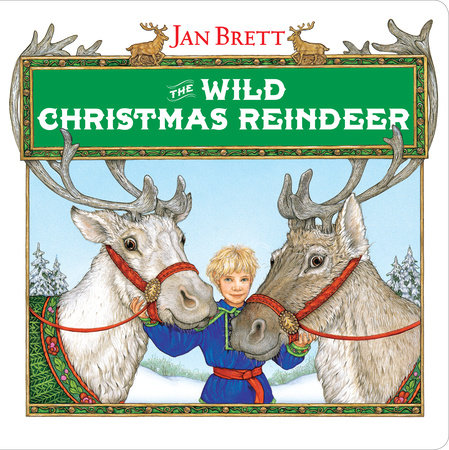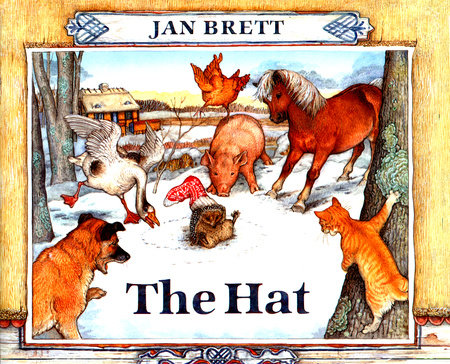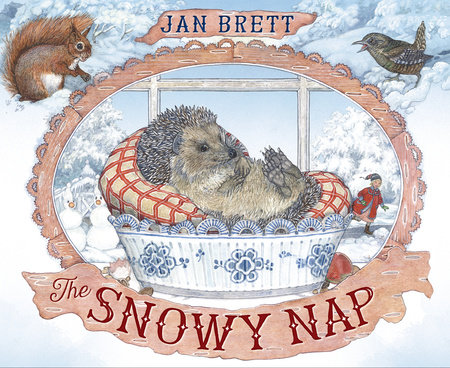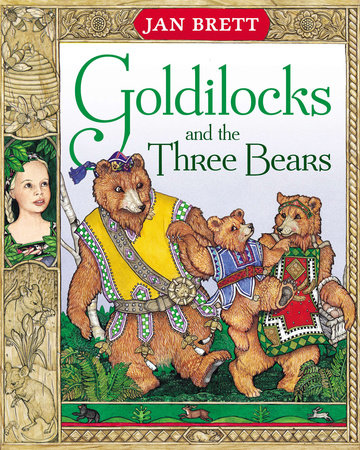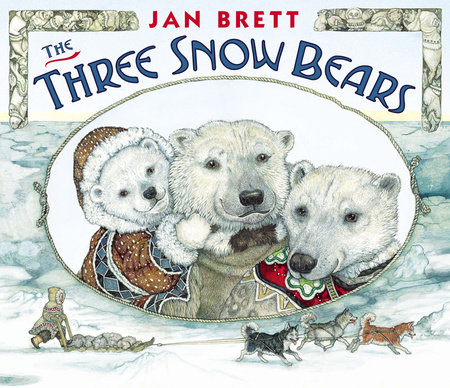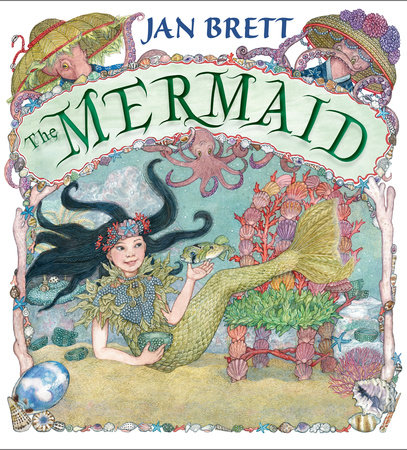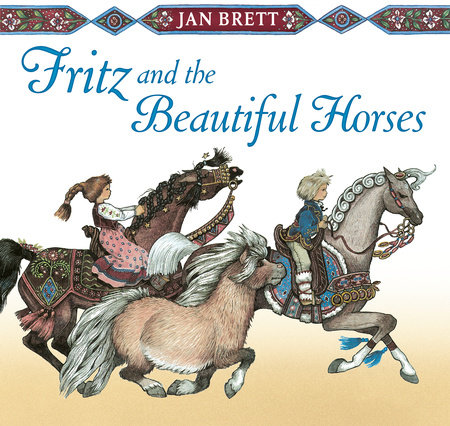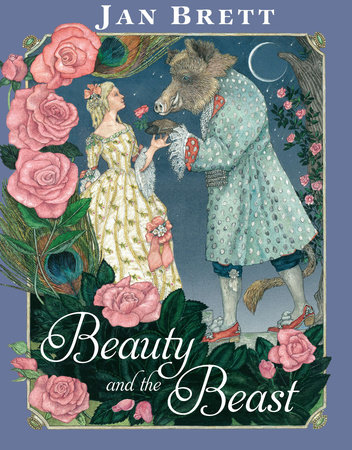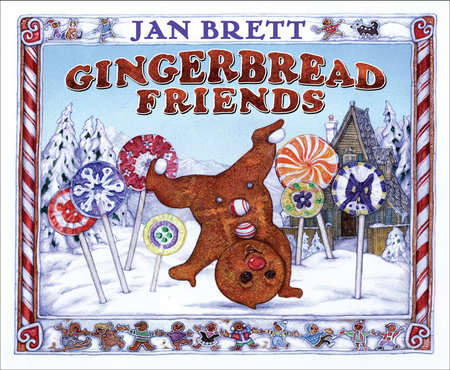Good Ideas Are Like Shooting Stars: A Chat with Author-Illustrator Jan Brett
by Jennifer Garry
Known for beautifully illustrated wintry classics like The Mitten, The Wild Christmas Reindeer, and The Hat, Jan Brett recently released her newest book, The Snowy Nap, which is a prequel to The Hat. I was delighted to chat with the prolific author-illustrator on the phone about her work. Brett shared how she finds personal inspiration for her stories by simply looking around at the world, why winter and close-up panel illustrations appear so often in her books, and the most important thing parents can do to encourage their pint-sized illustrators.
You have such a distinctive illustration style. I can always tell that a book is yours by the pictures. There’s so much texture and detail. How did you develop your style?
When I was a little girl, I really remember what it was like to be around six. I loved to read and I loved my books. They were like friends and there were certain books that I really admired. Beatrix Potter’s books were definitely some of them. They took you to a different place. You were totally aware that it wasn’t something you’ve ever seen before, but you believed it.
Even though the animals wore clothes, I could understand that they were stand-ins for people and the kind of emotions that people feel. I just loved the way that she was respectful of our young minds. She would often use words that were beyond what we would be using in school. In Peter Rabbit, for instance, he “implores the sparrows to exert themselves.” I didn’t know those words but I was so proud to think I figured it out what it means through the dialogue.
And then there were her illustrations! When Peter Rabbit lost his blue jacket one of its buttons was falling off and maybe it had been pulled through a bush. It’s fun the way she told the story in the pictures and the words were there almost as frosting on the cake. I loved that.
I’ve known I wanted to be an illustrator since I was in kindergarten and I used to promise myself, “I’m not going to make dumb books for kids. I’m going to create books that make them ask questions and might be a little mysterious and might have a word that you don’t know.” That’s why I flare up when my editor says, “Kids won’t know that word.”
In my new book, The Snowy Nap, there’s a tea cozy in it. Now, there are people who know tea and know tea cozies. I’m one of them. But most people don’t know about them. They’re kind of from a different era. Now we have those bubbling tea pots and instant cups. But I love the idea that you can kind of figure out that it’s something warm and to think of all of these little kids asking “What’s a tea cozy?”
It all goes back to Beatrix Potter. I just loved her.
It was also to thank her. That’s the way I hope to thank her, to be able to continue the tradition. And I hope that children will have that same reaction. I think it’s a really human reaction, when you see something in the arts that you love that you don’t ever want to go away from the world. That’s what I think about when I do my drawings. If I’m getting to a deadline or getting stuck with a book that I’m working on, I try to use that feeling to spur me on.
I love that. The idea of you being so in tune to your 6-year-old self while you write these books is so wonderful. And it brings me to my next question, which is from 7-year olds in Mrs. Lachowicz’s second grade class: How do you make your drawings look so real?
Well, observation is probably the most important thing. But I also have a library on the third floor that’s probably going to collapse the house. It has thousands of books that I collect when I go on trips. When I went to Denmark to work on The Snowy Nap, I came back with a lot of books from museums — especially the folk art museums where they have handicrafts and things that have been passed down.
The Snowy Nap is the prequel to The Hat, and in that there’s this hat that I saw. It was in a museum and it was in tatters. It had been found in a peat bog or something. It was really, really old and the peat had kept the colors. It had been kind of pieced back together. That’s the hat that was in my book. No one will ever know that, but I just think it’s cool.
When kids are bored — that’s our worst enemy, right? — just look at, for example, a tree trunk. What color is it? Mostly when I look at bulletin boards in schools with artwork of trees, the trunks are black. But look out in your backyard when you’re waiting for the bus or you’re at soccer on the sidelines, look at the trunks of trees. You’ll see that there are white ones that are birch trees. Or some that are almost completely green because they’re covered with moss. Or they could even have orange lichen on them. Or, if it’s been raining, they do look black. If it hasn’t rained in a long time, they look gray. They change.
This is a world that you can discover by just looking. Then, you can put them in your books and have a secret code that you can share with other people. It might not even be mentioned in the story, but it will give some of the atmosphere.
When children have their little pointer finger out and they trace it around the page, I say, “Ahhhh, I’ve done my job.”
So many of your books take place in the winter. What do you think draws you to winter stories?
If you look at all of my books, the ones that are popular and remembered are the ones that take place in the wintertime. I’ve made a lot of books that don’t take place in the winter too. I have a theory. I think my work has a lot of detail and I think the snow, being white, makes it come out more. A lot of artists are greedy for every inch of the page. I’m one of them. I can’t help myself. But it’s good to have a foil for that. The snow makes a perfect foil for it.
The other thing is that I live in New England and I love the transformation of our backyard. It has its own beauty in the late fall but then, all of a sudden, it will snow one of those really deep snows and you can get lost because it looks so different. Every tree has its own personality when its laden with snow. It’s just so beautiful. And when the light hits it — in the morning it might be pink, bright, and sparkly. In The Snowy Nap, I talk about blue time. If it’s snowy and it’s clear, you’ll get this blue time right as the sun is setting and everything has these shades of blue. It’s just so beautiful. I love that transformation.
There’s something about having a second chance or an unrealized view inside something that is so wonderful. When you’re a child, you’re always discovering things. I just love that part of my work. It’s writing for that audience. For that discovery and unveiling and revealing. If you think about a lot of really great literature, there’s that moment where things are not what they seem.
My daughters love to study the close-up panels on the sides of your pages. They like to look for clues to figure out what might happen next or what might be going on that they might not have otherwise known about. What inspired you to incorporate them into your stories?
When I was little, I loved my books but I was always a little anxious that everything would be okay at the end. I would always read the last page. Then, when I got to school, my teachers would always say, “You can’t read the last page first! That will ruin the story.” And I just had this little voice saying, “I can still have that sense of excitement and wonder if I read the last page. I just want to be secure about what’s going to come next.”

That’s so funny. My oldest daughter is the same way. She always reads the end of the book first.
Really? You know, I would jump completely into the story in my books. I think most kids have the ability to do that. You’re like, “Okay, this is real.” I just don’t like stories that have too much of an arc, where everything is resolved very suddenly at the end. You know when there’s a twist and then bang, it’s over. I like to have it kind of braided, so that all of the pieces come together at the end. That’s just my personal enjoyment of literature. It’s like life. You’re always looking for this little piece and that little piece and how it changes things. So that’s the way I like to tell a story.
Another question I have from kids is: Do you have a favorite book that you’ve written?
The Hat is probably my favorite book that I’ve ever written. I just like the way the story goes.
And I love the Goldilocks stories because I love that message of being curious [Brett has done several versions of the Goldilocks tale including Goldilocks and the Three Bears, The Three Snow Bears, and The Mermaid]. I love the way that she explores. When you’re little you’re doing everything for the first time. Even if it’s something that we think of as nothing, like going to a friend’s house overnight, it’s a huge thing when you’re a little kid.
You can’t promise that everything is going to be perfect. But you can say, you’re going to do it for the first time and you’re going to be really glad that you have that as part of your life. Like taking swim lessons. The first time you swim without a life jacket you feel like you’re going to drown. But then you get out of the water and have this feeling like “I did that. It was really scary, but I think I’ll try it again.” That’s one thing about being a child that I cherish and I hope that I even do as an old lady — trying things and pushing my frame of reference. It’s a big part of a child’s life, doing things for the first time all the time.
This question isn’t so much relating to your books in particular, but 11-year-old Ricky is wondering if you ever have a day when you’re stuck and don’t know what to write. How do you get ideas when that happens?
I have a list of things that I do. One of the oldest things is from when I was little. We always got sent to bed too early and I would close my eyes and imagine things. As you go sleep, your mind goes from real-life specifics to this kind of subconscious world.
Our minds are so complex and we don’t really know the whole extent of what they can do for us. If I have a problem before I go to sleep, I’ll say “I have to solve this problem in my book. How can I do that?” I’ll ask my own brain a question. It sounds kind of silly, but it’s like when you can’t remember your third grade teacher’s name. A couple of days later it will sort of come to you. I like to do that. It can be a quest before you go to sleep. Maybe the next morning you’ll think of it or maybe it will come to you a couple of mornings later.
I also go running all the time and I get tons of good ideas as the blood gets pumped to my brain. I’m sitting almost all day doing my work, so it’s really good to get out there and get the oxygen flowing. I used to have this running route and the last road I’d go down would be Wildcat Road. I would always get a good idea on Wildcat Road.
Good ideas are also like shooting stars. You have to be able to just look up and see them because they’re falling all the time. Part of it is catching those ideas. You might have an idea that’s going by if you’re thinking about something very curious that fascinates you or something really weird. Just save it. I save them in a mental notebook.
If you get in the habit of it, it gets to be fun and a part of your personality that you hold dear. That’s how you become an artist, whether it be dance or writing or whatever it is.
Do you have any advice for parents of kids who know they want to be illustrators when they grow up?
Give them some time. Take a kitchen timer for an hour and let them go someplace where they won’t get interrupted. If you can respect that so they can have that hour, it can be so helpful. For me, it sometimes takes me awhile to settle down. You need time to go into another world. If you’re trying to build another place in your picture, you can’t have someone coming in and saying, “Do you want spaghetti tonight or ravioli?” You just want to be in your picture. Alone time is important. And the clock is really helpful for people who need rules or boundaries. You need that time to just get in a zone. That’s when all of the good things happen.
I have one last question and this one comes from my 7-year-old daughter. She wanted to know what made you choose to write and illustrate because she thinks that seems like a lot of work.
I had to do it. I did not like to write. I always found it troublesome and I still do. I don’t think I’m talented at it. I like to tell stories, but I’m not a really good writer. But when I went around with my portfolio, the first editor said, “Jan, I like your artwork, but I have to match you up with a writer and it might be a while before I find someone who will be a good match for you. Why don’t you try writing something?” I told him I couldn’t write. He said “There are only like ten stories. It’s just how they’re told. Think about what you know.”
And it really worked. My first book was Fritz and the Beautiful Horses. My daughter was riding horses at the time and wanted to ride all of these big Thoroughbreds that were fancy and did big jumps. She wouldn’t be able to stay on them or wouldn’t have good experiences. Then there was this little pony that would just stop while you were riding. He would never step on you. And he would also jump jumps. He was a really good pony and I put him in the book. And that was my first book because of what my editor said. He just encouraged me.
You can learn how to do things. If you’re talented at art and not so good at the writing, there’s a lot of things that you can tell in the pictures that you don’t have to tell in the story. It can be a good crutch.
This interview was edited for length and clarity.
-
Get the Books:
-
The Mitten
Also available from:The Wild Christmas Reindeer
Also available from:The Snowy Nap
Also available from: -
Goldilocks and the Three Bears
Also available from:The Three Snow Bears
Also available from:The Mermaid
Also available from:Fritz and the Beautiful Horses
Also available from: -
The Umbrella
Also available from:Beauty and the Beast
Also available from:Gingerbread Friends
Also available from:Hedgie’s Surprise
Also available from:

